-
 Bitcoin
Bitcoin $107,341.7259
0.15% -
 Ethereum
Ethereum $2,438.6204
0.70% -
 Tether USDt
Tether USDt $1.0003
-0.02% -
 XRP
XRP $2.1866
1.94% -
 BNB
BNB $649.0952
0.36% -
 Solana
Solana $150.9602
5.63% -
 USDC
USDC $0.9999
0.00% -
 TRON
TRON $0.2742
0.40% -
 Dogecoin
Dogecoin $0.1645
1.93% -
 Cardano
Cardano $0.5669
1.18% -
 Hyperliquid
Hyperliquid $37.8286
4.19% -
 Bitcoin Cash
Bitcoin Cash $491.4669
-2.74% -
 Sui
Sui $2.8150
3.06% -
 Chainlink
Chainlink $13.4184
2.91% -
 UNUS SED LEO
UNUS SED LEO $9.0809
0.27% -
 Avalanche
Avalanche $18.0295
2.60% -
 Stellar
Stellar $0.2396
1.19% -
 Toncoin
Toncoin $2.8587
0.13% -
 Shiba Inu
Shiba Inu $0.0...01160
2.59% -
 Litecoin
Litecoin $86.4192
1.45% -
 Hedera
Hedera $0.1486
1.19% -
 Monero
Monero $308.4324
0.87% -
 Polkadot
Polkadot $3.4202
1.43% -
 Bitget Token
Bitget Token $4.6436
-0.34% -
 Dai
Dai $0.9998
-0.02% -
 Ethena USDe
Ethena USDe $1.0002
0.00% -
 Uniswap
Uniswap $7.1527
3.29% -
 Pi
Pi $0.5357
-8.45% -
 Pepe
Pepe $0.0...09588
4.61% -
 Aave
Aave $259.9759
0.81%
What is Proof of Work? Why does it require a lot of computing resources?
Proof-of-Work (PoW) secures blockchain networks by requiring miners to solve complex cryptographic puzzles using significant computing power, resulting in high energy consumption and prompting exploration of alternative consensus mechanisms.
Mar 11, 2025 at 04:35 pm
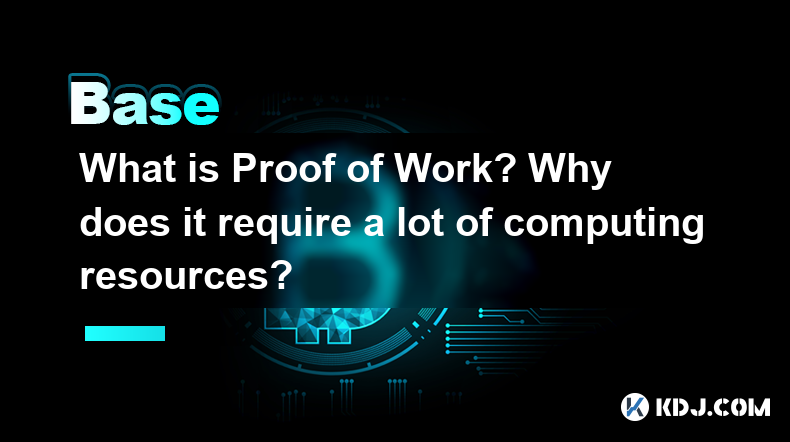
Key Points:
- Proof-of-Work (PoW) is a consensus mechanism used in blockchain networks to validate transactions and add new blocks to the chain.
- PoW requires significant computing power because it involves solving complex cryptographic puzzles. Miners compete to solve these puzzles, and the first to succeed gets to add the next block and receive a reward.
- The high energy consumption associated with PoW is a major criticism, driving the exploration of alternative consensus mechanisms.
- Understanding the intricacies of hashing algorithms and their role in PoW is crucial to grasping its resource-intensive nature.
What is Proof of Work?
Proof-of-Work (PoW) is a fundamental consensus mechanism in many blockchain networks, most notably Bitcoin. It's a system designed to secure the network and prevent fraudulent activities by requiring miners to expend computational resources to validate transactions and add new blocks to the blockchain. Essentially, it's a cryptographic puzzle that miners compete to solve. The first miner to solve the puzzle gets to add the next block of transactions to the blockchain and is rewarded with newly minted cryptocurrency.
Why does Proof of Work require a lot of computing resources?
The computational intensity of PoW stems from the nature of the cryptographic puzzles involved. These puzzles typically involve hashing algorithms, which are one-way functions. This means it's easy to compute the hash of a given input, but incredibly difficult to reverse the process and find the input that produces a specific hash.
Miners use specialized hardware, such as ASICs (Application-Specific Integrated Circuits), designed specifically for solving these cryptographic puzzles. The difficulty of the puzzles is adjusted by the network to maintain a consistent block generation time. As more miners join the network and its overall computing power increases, the difficulty of the puzzles increases proportionally, requiring even more computational resources to solve them.
The Hashing Algorithm and its Role
The core of PoW lies in the use of cryptographic hash functions. These functions take an input (a block of transactions) and produce a fixed-size output (the hash). The puzzle requires miners to find an input that produces a hash meeting specific criteria, often involving a certain number of leading zeros. This process involves repeatedly trying different inputs until a suitable hash is found. The more computing power a miner has, the more attempts they can make per second, increasing their chances of finding a solution first.
The difficulty adjustment mechanism is crucial. If the network's hashing power increases, the difficulty adjusts upwards, making the puzzles harder to solve. Conversely, if hashing power decreases, the difficulty adjusts downwards. This ensures a relatively consistent block generation time, preventing network congestion or excessive delays in transaction confirmations.
The Energy Consumption Debate
The high energy consumption of PoW is a significant concern. The massive amount of computational power required to solve the cryptographic puzzles translates to a substantial electricity consumption. This has led to criticisms about the environmental impact of PoW-based blockchains. The debate surrounding energy consumption is ongoing, with proponents arguing about the economic benefits and the potential for renewable energy sources to power mining operations.
Alternative Consensus Mechanisms
The energy consumption concerns associated with PoW have driven the development of alternative consensus mechanisms, such as Proof-of-Stake (PoS). PoS eliminates the need for energy-intensive mining by allowing validators to stake their cryptocurrency to participate in the consensus process. Validators are chosen based on the amount of cryptocurrency they stake, and their chances of being selected to validate transactions are proportional to their stake. PoS is generally considered more energy-efficient than PoW.
The Complexity of the Puzzles
The complexity of the cryptographic puzzles in PoW isn't just about the computational power required to solve them. It's also about the randomness involved. The puzzles are designed to be unpredictable, making it extremely difficult for anyone to manipulate the outcome. This unpredictability is vital for maintaining the security and integrity of the blockchain. If the puzzles were easily solvable or predictable, the network would be vulnerable to attacks and manipulation.
The Role of Mining Pools
Given the computational intensity of PoW, many miners collaborate in mining pools. A mining pool combines the computing power of multiple miners, increasing their collective chances of solving the puzzles and sharing the rewards. This allows smaller miners to participate more effectively, even if they don't have the resources to compete individually against larger operations. However, mining pools also raise concerns about centralization, as a small number of large pools could potentially control a significant portion of the network's hashing power.
Frequently Asked Questions:
Q: Is Proof of Work secure?
A: Yes, PoW's security is derived from the computational difficulty of solving its cryptographic puzzles. The sheer amount of computational power required to successfully attack a PoW blockchain makes it prohibitively expensive and impractical for attackers.
Q: What are the disadvantages of Proof of Work?
A: The primary disadvantage is its high energy consumption. Other drawbacks include its scalability limitations and the potential for centralization due to the dominance of large mining pools.
Q: How does the difficulty adjustment work in PoW?
A: The network adjusts the difficulty of the cryptographic puzzles based on the average time it takes to find a solution. If blocks are found too quickly, the difficulty increases, and vice versa. This mechanism ensures a consistent block generation time.
Q: What are some examples of cryptocurrencies using Proof of Work?
A: Bitcoin, Litecoin, and Ethereum (before the merge) are prominent examples of cryptocurrencies using PoW.
Q: What is an ASIC?
A: An ASIC (Application-Specific Integrated Circuit) is a specialized microchip designed for performing a single task very efficiently. In the context of PoW, ASICs are designed to solve cryptographic hash functions much faster than general-purpose CPUs or GPUs.
Disclaimer:info@kdj.com
The information provided is not trading advice. kdj.com does not assume any responsibility for any investments made based on the information provided in this article. Cryptocurrencies are highly volatile and it is highly recommended that you invest with caution after thorough research!
If you believe that the content used on this website infringes your copyright, please contact us immediately (info@kdj.com) and we will delete it promptly.
- Kitten Craze Online: Hunting for the Purr-fect Coin Purse
- 2025-06-29 10:30:12
- Pudgy Penguins Soar to 3-Month High Amidst PENGU ETF Buzz!
- 2025-06-29 10:30:12
- AI Agents, Token Role, and Capitalization: Navigating the Web3 Frontier
- 2025-06-29 10:50:11
- Avalanche Price Forecast: Grayscale Boost Signals Potential Rally to $50?
- 2025-06-29 10:50:11
- Khazan's Getting a Facelift: Balance Changes and Freebies Galore!
- 2025-06-29 11:10:12
- Wall Street's Crypto Rival Battle: Saylor vs. Chanos and the Meme Coin Mania
- 2025-06-29 11:10:12
Related knowledge
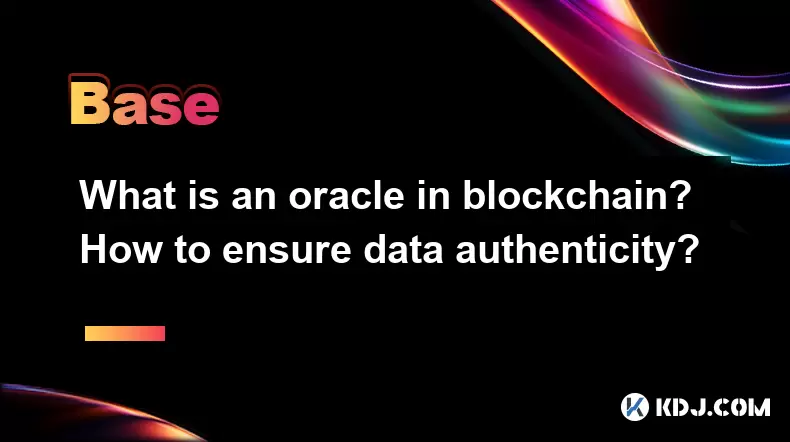
What is an oracle in blockchain? How to ensure data authenticity?
Jun 19,2025 at 08:49pm
Understanding the Role of an Oracle in BlockchainIn the context of blockchain technology, an oracle serves as a bridge between the blockchain and external data sources. While blockchains are inherently secure and decentralized, they cannot access real-world information on their own. Oracles enable smart contracts to interact with off-chain data such as ...
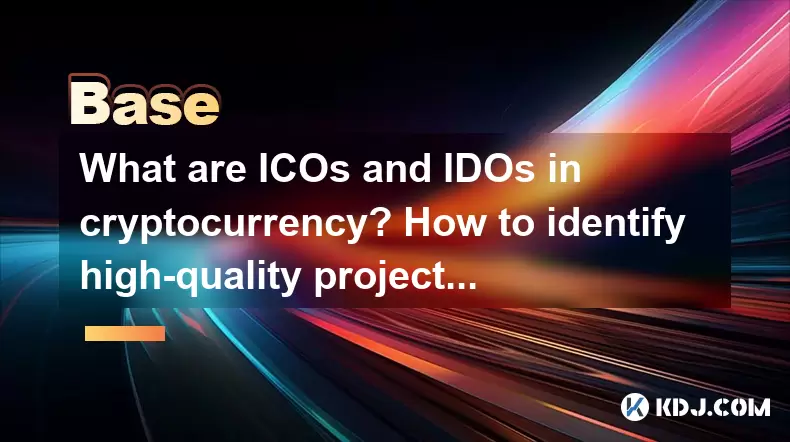
What are ICOs and IDOs in cryptocurrency? How to identify high-quality projects?
Jun 22,2025 at 11:49am
Understanding ICOs in CryptocurrencyInitial Coin Offerings (ICOs) are fundraising mechanisms used by cryptocurrency startups to raise capital for their projects. In an ICO, a company creates and sells its own tokens to investors in exchange for established cryptocurrencies like Bitcoin or Ethereum. The process typically involves the release of a whitepa...
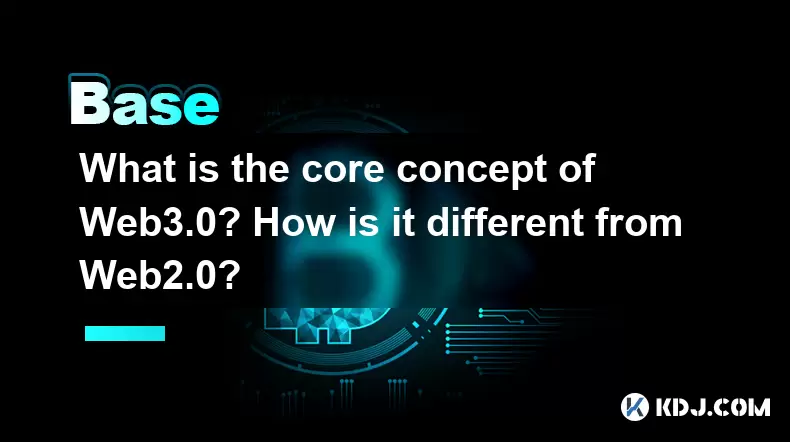
What is the core concept of Web3.0? How is it different from Web2.0?
Jun 21,2025 at 05:56pm
Decentralization as the Foundation of Web3.0The core concept of Web3.0 revolves around decentralization, which fundamentally challenges the centralized architecture of Web2.0. In Web3.0, control and ownership are distributed across a network rather than being held by a central authority or corporation. This is achieved primarily through blockchain techn...
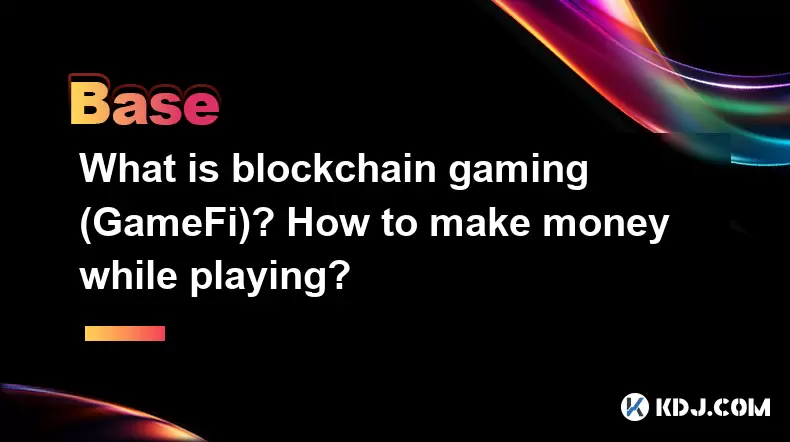
What is blockchain gaming (GameFi)? How to make money while playing?
Jun 20,2025 at 07:56am
Understanding Blockchain Gaming (GameFi)Blockchain gaming, often referred to as GameFi, is a fusion of blockchain technology and video games. It enables players to own in-game assets through non-fungible tokens (NFTs) and earn rewards via cryptocurrencies or token-based systems. Unlike traditional games where items are controlled by centralized develope...
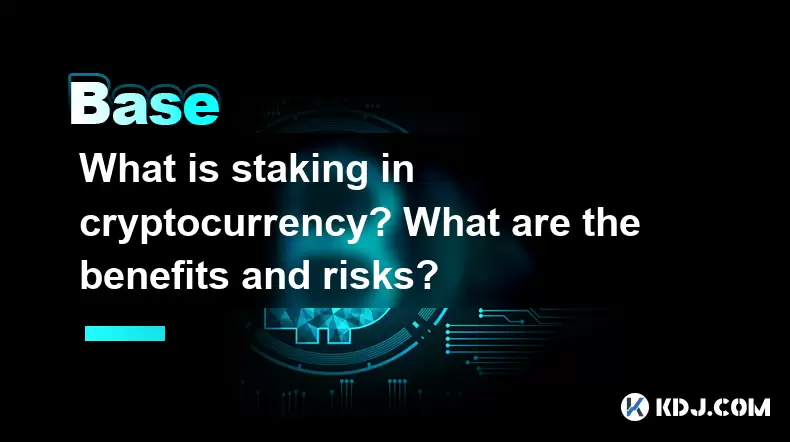
What is staking in cryptocurrency? What are the benefits and risks?
Jun 22,2025 at 10:01am
Understanding the Concept of Staking in CryptocurrencyStaking in cryptocurrency refers to the process of actively participating in transaction validation on a blockchain network that uses a Proof-of-Stake (PoS) consensus mechanism. Instead of miners competing to solve complex mathematical puzzles as in Proof-of-Work systems like Bitcoin, PoS blockchains...
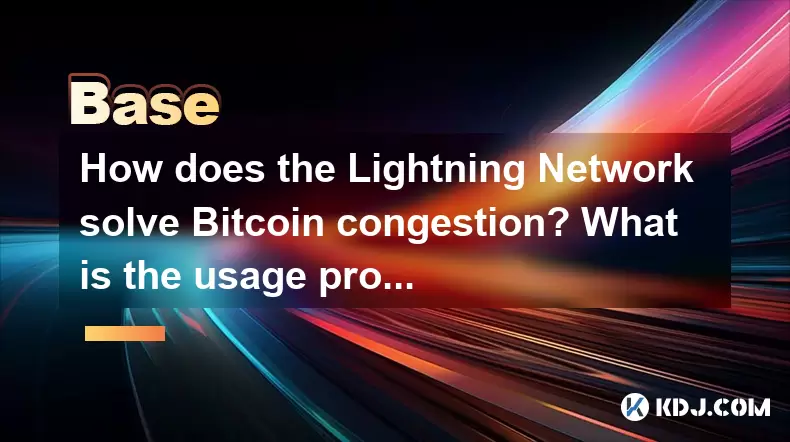
How does the Lightning Network solve Bitcoin congestion? What is the usage process?
Jun 23,2025 at 06:21pm
Understanding Bitcoin Network CongestionBitcoin, as a decentralized digital currency, operates on a blockchain that records every transaction in a public ledger. Each block has a limited size, typically 1 megabyte, which allows for only a certain number of transactions per second (TPS). When the number of transactions increases, the network becomes cong...

What is an oracle in blockchain? How to ensure data authenticity?
Jun 19,2025 at 08:49pm
Understanding the Role of an Oracle in BlockchainIn the context of blockchain technology, an oracle serves as a bridge between the blockchain and external data sources. While blockchains are inherently secure and decentralized, they cannot access real-world information on their own. Oracles enable smart contracts to interact with off-chain data such as ...

What are ICOs and IDOs in cryptocurrency? How to identify high-quality projects?
Jun 22,2025 at 11:49am
Understanding ICOs in CryptocurrencyInitial Coin Offerings (ICOs) are fundraising mechanisms used by cryptocurrency startups to raise capital for their projects. In an ICO, a company creates and sells its own tokens to investors in exchange for established cryptocurrencies like Bitcoin or Ethereum. The process typically involves the release of a whitepa...

What is the core concept of Web3.0? How is it different from Web2.0?
Jun 21,2025 at 05:56pm
Decentralization as the Foundation of Web3.0The core concept of Web3.0 revolves around decentralization, which fundamentally challenges the centralized architecture of Web2.0. In Web3.0, control and ownership are distributed across a network rather than being held by a central authority or corporation. This is achieved primarily through blockchain techn...

What is blockchain gaming (GameFi)? How to make money while playing?
Jun 20,2025 at 07:56am
Understanding Blockchain Gaming (GameFi)Blockchain gaming, often referred to as GameFi, is a fusion of blockchain technology and video games. It enables players to own in-game assets through non-fungible tokens (NFTs) and earn rewards via cryptocurrencies or token-based systems. Unlike traditional games where items are controlled by centralized develope...

What is staking in cryptocurrency? What are the benefits and risks?
Jun 22,2025 at 10:01am
Understanding the Concept of Staking in CryptocurrencyStaking in cryptocurrency refers to the process of actively participating in transaction validation on a blockchain network that uses a Proof-of-Stake (PoS) consensus mechanism. Instead of miners competing to solve complex mathematical puzzles as in Proof-of-Work systems like Bitcoin, PoS blockchains...

How does the Lightning Network solve Bitcoin congestion? What is the usage process?
Jun 23,2025 at 06:21pm
Understanding Bitcoin Network CongestionBitcoin, as a decentralized digital currency, operates on a blockchain that records every transaction in a public ledger. Each block has a limited size, typically 1 megabyte, which allows for only a certain number of transactions per second (TPS). When the number of transactions increases, the network becomes cong...
See all articles

























































































